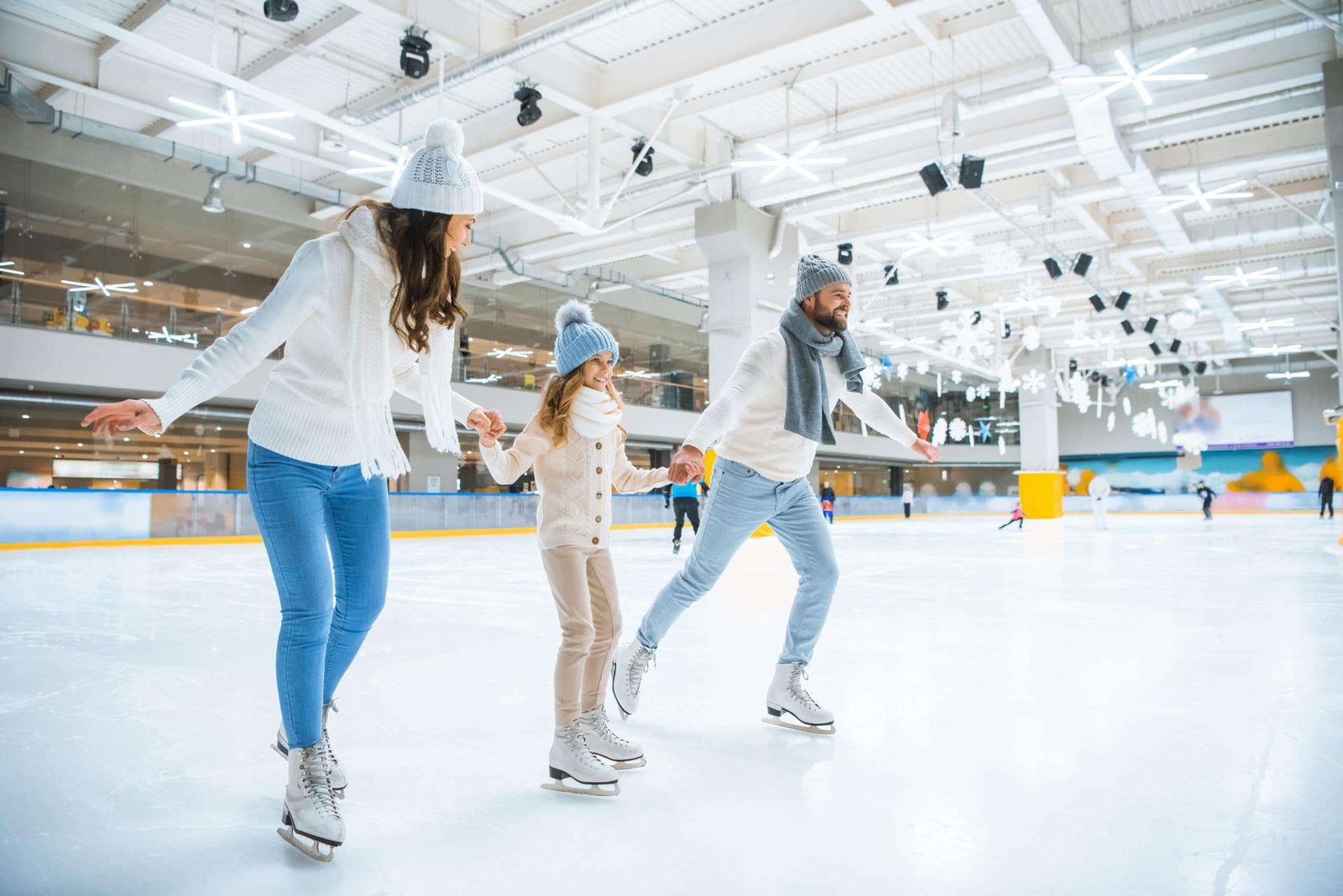Why Home Ice Rinks Are Gaining Popularity
Over the past several years, building a home ice rink has captured the imagination of many families, athletes, and outdoor enthusiasts. With routines shifting toward spending more time at home, there’s an increasing demand for engaging and meaningful activities that can take place without the need to travel or join crowded venues. The dream of strapping on a pair of skates and gliding across your backyard ice rink has become more attainable thanks to advancements in natural and synthetic ice technologies.
Interest in home rinks is not merely a fleeting fad; it’s a lifestyle shift driven by convenience and creativity. As friends and family gather in backyards and converted indoor spaces, this trend unites all generations through active, shared experiences. According to The Globe and Mail, the spike in home ice rink installations is rooted in the desire for safe recreation and the magic of bringing a favorite winter pastime directly to one’s doorstep. DIY ice rinks now represent a booming category in home improvement projects, bridging the gap between fun and fitness for countless households.
Choosing Between Natural and Synthetic Ice
Deciding between a natural ice surface and a synthetic alternative is often the first question for would-be rink builders. Natural ice has a nostalgic charm that resonates with anyone who grew up skating outside in classic winter conditions. It provides that familiar sound and buttery glide, making every session an extension of a cherished seasonal tradition. However, maintaining natural ice means watching the weather, shoveling snow, and resurfacing often to keep things smooth. A sudden thaw or unexpected snowfall can mean hours of extra work.
Synthetic ice, by contrast, is built from durable, interlocking polymer panels engineered to mimic the experience of skating on real ice. Installation is straightforward; once your tiles are in place, there’s no waiting for the perfect freeze. Families and hockey enthusiasts can practice all year, rain or shine, and these surfaces have become popular in regions where winter is short or unpredictable. The lower long-term maintenance and easy cleaning also make synthetic rinks a practical choice for busy homeowners. For athletic families balancing climate unpredictability and hectic schedules, synthetic rinks offer a reliable solution that translates to more skating time and less worrying about the weather.
Essential Steps for Home Rink Installation
Step 1: Assess and Prepare Your Space
Successful rink building begins with surveying your property to find the perfect level spot. Outdoors, look for areas free from overhanging trees, which can shed debris, and away from driveways, where car traffic can pose a hazard. Indoors, basements, and garages with ample headroom and ventilation work well. Measuring carefully ensures you make the most of your available space, allowing room for a rink that fits your needs and ambitions.
Step 2: Gather Materials
After determining your location and desired size, collect the necessary materials. For natural rinks, this includes sturdy sideboards, brackets, and a robust liner to contain the water. Synthetic rinks require quality polymer tiles designed for realistic skating and optional edge ramps and accessories. Thoughtful investment in boards and lighting can enhance safety and fun, transforming a simple project into a standout skating venue.
Step 3: Assemble and Install
Assembly differs depending on the surface, but always follow a thorough and safety-minded approach. For natural ice rinks, spread a durable liner across your chosen site, assemble the boards, and secure everything before filling with water. Wait for consistently freezing temperatures before adding water, and be prepared to resurface as needed. For synthetic rinks, follow a detailed step-by-step guide such as the NHL’s backyard rink tutorial, connecting panels carefully so there’s no sticking or shifting. Everything should feel secure and enjoyable during all skating sessions.
Step 4: Personalize and Enjoy
Small touches make all the difference. Install benches for skaters to rest, position netting to keep stray pucks in play, and string up lights for twinkling evening skates. Adding warm-up gear, extra gloves, and a few favorite tunes turns each gathering into a memorable occasion, whether a meet-up with neighbors or a quiet morning practice.
Budgeting for Your Project
Budget is a real consideration for most households, and home renovation projects can vary significantly in total cost. It’s wise to list all anticipated expenses upfront and prepare for a few extras. For natural ice, costs are often spread over every season: liners need replacing over time, water adds up depending on rink size, and you may need to invest in resurfacing and snow-clearing tools. A larger or more elaborate rink means higher costs, especially if professional-grade accessories are added.
Synthetic ice rinks require a greater initial investment—quality tiles cost more than a liner and water—but year-round functionality and no weather-related repairs offset that over time. Synthetic setups may also save on water and energy bills. Families weighing the options should calculate their needs not just for one season, but for years to come.
Year-Round Skating Benefits
Perhaps the greatest gift of a home rink is the ability to skate in every season. Natural rinks, when winter weather cooperates, deliver chilly, festive fun. Synthetic rinks, however, mean figure skating, stickhandling drills, and pickup games don’t need to pause for warmer weather. Consistent skating builds physical endurance and strength and boosts mental well-being—participants routinely report increased energy, improved mood, and stronger family bonds from frequent at-home play.
The chance for ongoing practice is invaluable for kids and aspiring athletes. Data shows that regular physical activity at home can improve skill acquisition and reduce barriers to participation. Even for those who love a good skate, the limitless access that a personal rink provides makes it increasingly popular among casual and committed skaters.
Maintenance Tips to Keep Your Ice Perfect
While building a rink is rewarding, smart maintenance keeps it safe and fun. Natural ice requires vigilant care—snow must be removed after every storm, and periodic resurfacing with warm water helps to fill cracks and create a sleek gliding surface. In early or late winter, check often for thin ice and patch rough spots as needed.
Synthetic ice owners should routinely sweep and mop to remove dust, leaves, and other debris. Using only soft brushes or manufacturer-recommended cleaning agents preserves the surface for years. Always inspect boards, connectors, and safety nets to prevent injuries and keep play safe and enjoyable.
Inviting Friends and Family
At its core, a home rink isn’t just for personal practice—it’s a stage for laughter, learning, and lasting memories. It’s a magnet for social connection, from impromptu hockey matches to holiday figure skating routines. Setting up a seating or warm-up area ensures that even spectators feel included and comfortable throughout the festivities.
Organize group skates, birthday celebrations, or themed parties, providing extra gloves, skates, and helmets to encourage participation. These joyful moments promote physical activity for all ages and nurture lifelong skills and friendships. In an increasingly digital world, such in-person interactions are genuinely priceless.
Resources and Safety Best Practices
Safe skating is central to every successful home rink project. Establish clear rules before the first skate—helmets for everyone under 18, no roughhousing, and always supervised play. Take advantage of guidance from reputable organizations and local community experts, who often publish valuable safety and maintenance tips that reflect the latest research.
Prioritize well-lit areas and properly fastened equipment. Stay informed about best practices and consult resources to keep your rink in superb shape for many seasons. Combining common sense with continuous learning, a home rink can deliver years of healthy recreation, growth, and enjoyment for skaters and their families.

